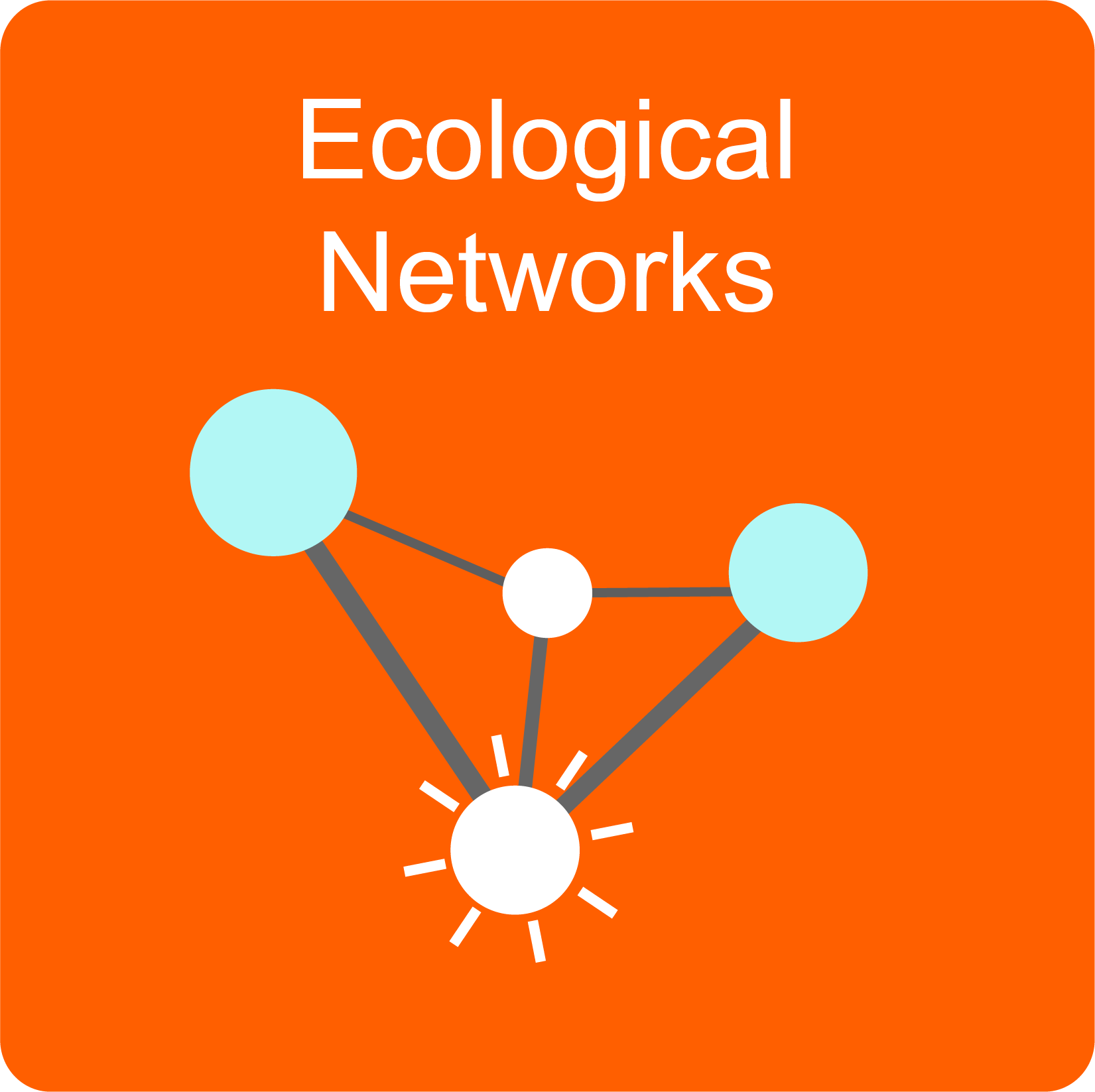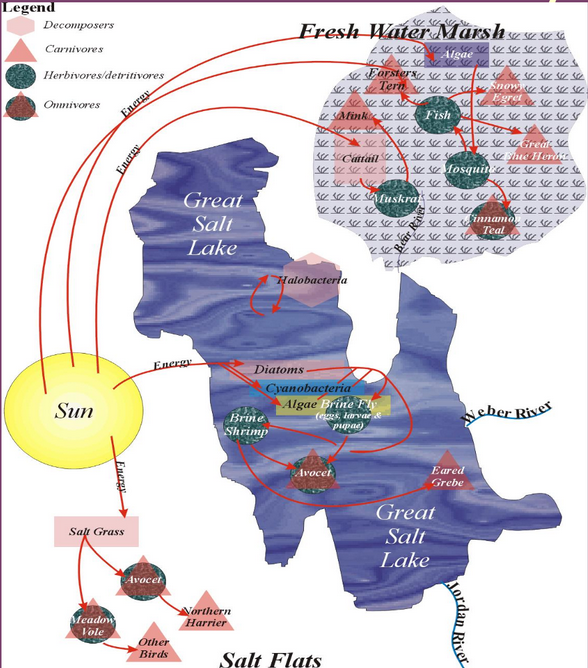Ecological Networks

Unit Plan and Lessons Flow Chart Printable Overview Contributors
 The development of network concepts for students begins with a highly interactive inquiry into cell phone networks. Cell phones serve as a handy knowledge base on which to develop understanding. Each cell phone represents a node, and each phone’s address book represents an edge, or the calling relationships between cell phones. Students conceptualize the entire cell phone network by drawing a graphic that depicts each cell phone in the class as a circle (node) connected by directional lines (edges) to their classmate’s cell phones in their address book. Students are queried on shortest calling pathway for calling and calling pathways when selected phones are knocked out using school and classroom scenarios.
The development of network concepts for students begins with a highly interactive inquiry into cell phone networks. Cell phones serve as a handy knowledge base on which to develop understanding. Each cell phone represents a node, and each phone’s address book represents an edge, or the calling relationships between cell phones. Students conceptualize the entire cell phone network by drawing a graphic that depicts each cell phone in the class as a circle (node) connected by directional lines (edges) to their classmate’s cell phones in their address book. Students are queried on shortest calling pathway for calling and calling pathways when selected phones are knocked out using school and classroom scenarios.
Students then use Cytoscape, visually graphing software, to model and interrogate the structure and properties of the class’s cell phone network. They inquiry more advanced calling relationships and perturb the network (knock out cell towers) to reexamine the adjusted network’s properties. Advanced questions about roaming, cell towers and email focus on a deeper understanding of network behavior. Both the paper and software network exercises highlight properties of networks and the activities of scientists with biological networks.
Ecological Networks and Extremophiles
 Students apply their knowledge of networks to represent complex ecological systems. Students again use Cytoscape, this time to author a network of their choosing. They create an intricate food web showing the organisms (nodes), abiotic factors (nodes), and the energy that flows between them (edges) using Cytoscape software. Students are further encouraged to think of all types of life and are then led to develop questions about extreme organisms and environments, which they then research. These activities help them understand the broad range of life and foster further conceptualization of the interdependence of a system. This leads them into using networks to tackle a real world investigation.
Students apply their knowledge of networks to represent complex ecological systems. Students again use Cytoscape, this time to author a network of their choosing. They create an intricate food web showing the organisms (nodes), abiotic factors (nodes), and the energy that flows between them (edges) using Cytoscape software. Students are further encouraged to think of all types of life and are then led to develop questions about extreme organisms and environments, which they then research. These activities help them understand the broad range of life and foster further conceptualization of the interdependence of a system. This leads them into using networks to tackle a real world investigation.
The Great Salt Lake Case Study
 In the case study, students observe an environmental disturbance that has resulted from a man made causeway across an unidentified body of water. After making observations and posing questions to the teacher, the students discover that the North arm of the lake, isolated from fresh water inputs, appears purple, whereas the water in the Southern arm has normal coloration. Pictures of the lake (which is actually the Great Salt Lake) taken over several decades illustrate a receding water level from drought conditions and normal evaporation. The teacher guides students’ use of evidence in designing a hypothesis for the difference between the two GSL arms. The students then get a chance to test their hypotheses by conducting a scientific inquiry. After performing an experiment, they collaborate with other classes by pooling all data sets to complete a statistical analysis of their results. Their understanding is assessed when the students go back to their original hypothesis and plan an experiment which is later peer evaluated. When completed, they revisit the new GSL network as a class and see how the experimental data is incorporated into and validates the most current network.
In the case study, students observe an environmental disturbance that has resulted from a man made causeway across an unidentified body of water. After making observations and posing questions to the teacher, the students discover that the North arm of the lake, isolated from fresh water inputs, appears purple, whereas the water in the Southern arm has normal coloration. Pictures of the lake (which is actually the Great Salt Lake) taken over several decades illustrate a receding water level from drought conditions and normal evaporation. The teacher guides students’ use of evidence in designing a hypothesis for the difference between the two GSL arms. The students then get a chance to test their hypotheses by conducting a scientific inquiry. After performing an experiment, they collaborate with other classes by pooling all data sets to complete a statistical analysis of their results. Their understanding is assessed when the students go back to their original hypothesis and plan an experiment which is later peer evaluated. When completed, they revisit the new GSL network as a class and see how the experimental data is incorporated into and validates the most current network.
Teachers please note: If you’d like a more recent or different geographic scenario, there are ones available that demonstrate similar drastic changes in an ecosystem. See Lesson 2 for more information.
Please view this flow chart to visualize the lesson sequence and use the menu to on the left to explore Course Materials for more information.
License
![]() Except where otherwise noted, the Ecological Networks module, copyright Institute for Systems Biology (ISB) through Baliga Systems Education Experiences, is available under a Creative Commons Attribution-NonCommercial 4.0 International License. All logos, trademarks, and videos are property of their respective owners. This resource may contain links to websites operated by third parties. These links are provided for your convenience only and do not constitute or imply any endorsement or monitoring by ISB or ISB’s funding agencies. Please confirm the license status of any third-party resources and understand their terms of use before reusing them.
Except where otherwise noted, the Ecological Networks module, copyright Institute for Systems Biology (ISB) through Baliga Systems Education Experiences, is available under a Creative Commons Attribution-NonCommercial 4.0 International License. All logos, trademarks, and videos are property of their respective owners. This resource may contain links to websites operated by third parties. These links are provided for your convenience only and do not constitute or imply any endorsement or monitoring by ISB or ISB’s funding agencies. Please confirm the license status of any third-party resources and understand their terms of use before reusing them.


